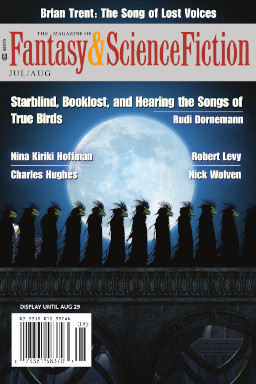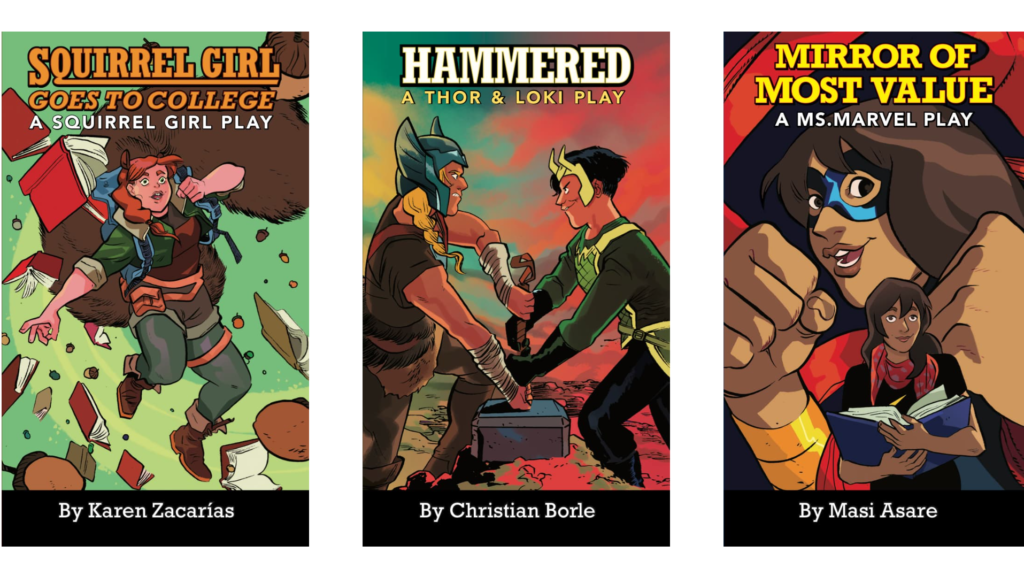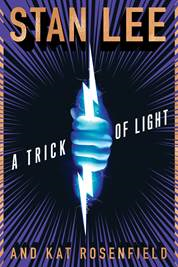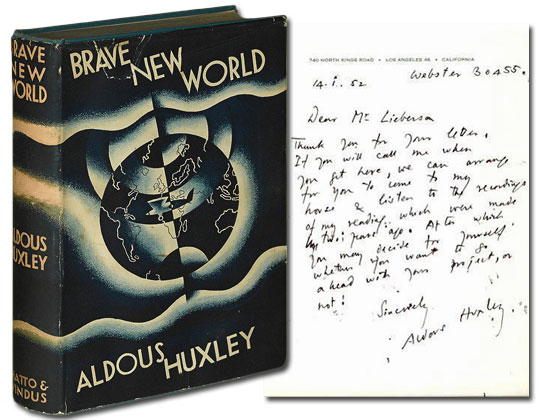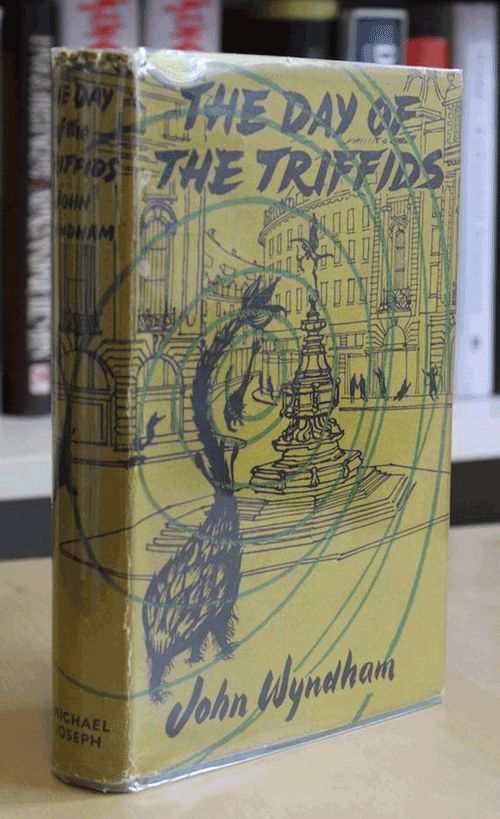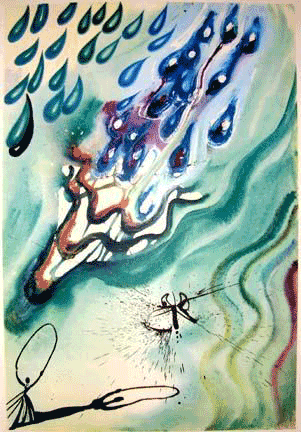(1) CLOCK NOT RUNNING OUT ON TIKTOK? Yesterday’s Deadline’s article “Supreme Court Upholds Law Banning TikTok In U.S.” initially reported —
…the U.S. Supreme Court on Friday upheld a lower court ruling that the app owned by China’s ByteDance must sell itself or be banned in the U.S. on January 19 due to national security concerns….
…Read the Supreme Court’s full TikTok opinion here….
…The ban would take effect under a new bipartisan law, the Protecting Americans from Foreign Controlled Applications Act, signed by President Joe Biden last year….
However, the incoming President said he will probably delay the ban: “Trump says he will ‘most likely’ give TikTok 90-day extension to avoid ban” at NBC News.
President-elect Donald Trump told NBC News’ “Meet the Press” moderator Kristen Welker in a phone interview Saturday that he will “most likely” give TikTok a 90-day reprieve from a potential ban in the U.S. after he takes office Monday….
And Deadline subsequently added this update to its article:
TikTok’s CEO has responded to a Supreme Court ruling today that paves the way for the app to be banned on Sunday, thanking the incoming president. “On behalf of everyone at TikTok and all our users across the country, I want to thank President Trump for his commitment to work with us to find a solution that keeps TikTok available in the United States,” said chief executive Shou Chew in a video posted to the platform.
“We are grateful and pleased to have the support of a president who truly understands our platform, one who has used TikTok to express his own thoughts and perspectives, connecting with the world and generating more than 60 billion views of his content in the process,” he said. “As you know, we have been fighting to protect the constitutional right of free speech for the more than 170 million Americans who use our platform every day to connect, create, discover and achieve their dreams.”
(2) WHY WE FIGHT. CrimeReads’ fascinating analysis of “Pride and Prejudice and Nazis: On Aldous Huxley’s Wild Wartime Jane Austen Adaptation” teases out its threads of pre-WWII propaganda.
…But underneath its thick, saccharine coating; the film is something else: a contrived, convoluted morsel of political propaganda. Filmed by on American soil by Metro Goldwyn Mayer, this British adaptation shot directly after the French surrender to the Nazis, released during the Battle of Britain, and co-screenwritten by depressed British idealist Aldous Huxley, managed to transform that famous English book Pride and Prejudice into a partisan plug relying on Depression-era escapism, thematic idealization of a nationalistic Anglocentric tradition, the depiction of highly distracting romantic merriment, and a reassuringly happy ending to prepare and energize Americans for the inevitable: the United States’ joining the Allied Forces overseas to fight in World War II….
…Austen, Jerome, and Huxley place the same emphasis on class, however, in that all three versions have the same classless ending—Jane and Mr. Bingley marry, and Elizabeth and Mr. Darcy marry, despite their class and financial differences. The concept of any Pride and Prejudice adaptation is that is possible to climb up a social ladder, because everyone is equal—or rather, everyone has the ability to be equal. Most of the characters belong in many social circles, and it is possible to find love or friendship somewhere else. Perhaps this is the dominant reason why Huxley chose the Pride and Prejudice story for his anti-war-but-if-you-have-to-fight-then-fight-with-these-guys-esque opus instead of another classical novel (after all, many of other elements of the film Pride and Prejudice that make it jingoistic lie in plot alterations, or aesthetics —changes that could applied to any other story in the adaptation process): Pride and Prejudice is, at its core, a story about good, smart everyday people who make mistakes but learn their lessons just as much as it is a story about how important it is not to form judgments. Huxley nearly abuses this tone by exaggerating it in his own, though; any shred of mystery about the moral of the story is completely detonated throughout. For example, in the film, Mr. Darcy comforts Elizabeth after Caroline Bingley insults her. Elizabeth is shocked, and informs him, “At this moment, it’s difficult to believe that you are so proud.” Mr. Darcy smiles vainly and answers back, “at this moment, it’s difficult to believe that you are so prejudiced.” Huxley spells out the main paradox of the story, killing the main thematic mystery – the only thing left for the audience to wonder is how they can get shipped off to fun, idyllic England. Austen’s tone is inclusive, it’s happy, it’s insightful, and it’s open-minded—so now it fights fascism.
Of course, the aesthetics of the film Pride and Prejudice hide these anti-Nazi sentiments under tons and tons of poofy dresses and behind maypoles. For example, in the script, Huxley and Murfin manage to turn the extravagant Netherfield Ball into a garden party, which the film then turns into a frothy visual circus—where everything appears to be made out of cotton candy and wishes….
(3) LIU CIXIN MUSEUM. “Museum dedicated to sci-fi writer opens” from Chinadaily.com in October 2024.
China launched its first literary museum dedicated to Liu Cixin, a renowned science fiction writer and Hugo Award winning novelist, in Yangquan, Shanxi province, on Sunday.
While accepting the nation’s honor and unveiling the Liu Cixin Sci-fi Museum, Liu, author of the acclaimed sci-fi novel trilogy The Three-Body Problem who grew up in Yangquan, said that he hopes the museum can help the general public gain a better understanding of the sci-fi literature and develop an interest in the genre.
Located at a cultural park, the 700-square-meter museum educates visitors about Liu’s growth, his books and awards, and cultural and creative products derived from his works. Immersive projectors also create an atmosphere mimicking interstellar voyages described in Liu’s novels….
… Yan Jingming, vice-president of the China Writers Association, said that the establishment of the museum is not only an homage to Liu and his works but also serves as a beacon for China’s sci-fi writers and fans.
He said he hopes it will bring like-minded sci-fi novelists together and spark more inspiration and works.
The launch was part of a weeklong sci-fi promotional event in Yangquan that also included a symposium on sci-fi literature and real-world productivity, where Liu shared his thoughts on potential immigration to Mars.
“I would love to go to Mars if it were a round trip,” Liu said, explaining that a one-way journey would not suit him as he had work to do and family members to be with on Earth….
(4) WHAT’S THAT SMELL? Neil Baker returns with more horrible dino movies in “Prehistrionics, Part III” at Black Gate.
We’re off on another adventure filled to the brim with disappointment. 20 films I’ve never seen before, all free to stream, all dinosaur-based.
First on his list, last in his heart:
The Jurassic Dead (2017) Tubi
Just how bad is the CG? Rubbish.
Sexy scientist? Nope.
Mumbo jumbo? Reanimation, dinosaurs, zombies, asteroids.
Just in case you thought I might try to start the year on a high note, might I present this tripe. The premise is simple: a Herbert West type (complete with glowing green reanimating fluid and dead cat) loses his job and decides to destroy the world. Somehow he has a T-Rex, which he zombifies, and then he turns into Immortan Joe and sets off an EMP just as asteroids wipe out some cities. A crack, sorry crap, team of commandos based on 80s action figures must team up with a group of hugely unlikeable civilians to survive.
Everything ends in nuclear devastation. Effects-wise, the dinosaur is a cute, Walking with Dinosaurs puppet, but everything else is shockingly awful green screen composites. Just terrible.
3/10
(5) GAIMAN: ART AND ARTIST. NPR’s popular culture commentator Glen Weldon speaks as “One longtime Neil Gaiman fan on where we go from here”.
…While we don’t know whether these disturbing allegations are true, learning of them naturally leads to a deeply personal, complicated question: How do we deal with allegations about artists whose work we admire — even revere?
I should note: It’s a complicated question for most of us. It’s not remotely complicated for those who rush to social media to declare that they never truly liked the creator’s work in the first place, or that they always suspected them, or that the only possible response for absolutely everyone is to rid themselves of the now-poisoned art that, before learning of the allegations against the creator, they loved so dearly.
Nor is it complicated for those who will insist that a creator’s personal life has no bearing on how we choose to respond to their work, and that the history of art is a grim, unremitting litany of monstrous individuals who created works of enduring, inviolate beauty.
Most of us, however, will find ourselves mired in the hand-wringing of the in-between. We’ll make individual, case-by-case choices, we’ll cherry-pick from the art, we’ll envision ourselves, in years ahead, sampling lightly from the salad bar of the artist’s collected works, and feeling a little lousy about it.
Here’s my personal approach, whenever allegations come out about an artist whose work is important to me: I see the moment I learned of them as an inflection point. From that very instant, it’s on me.The knowledge of the allegations will color their past works, when and if I choose to revisit them in the future. It won’t change how those works affected me back then, and there’s no point in pretending it will. But my newfound understanding of the claims can and will change how those works affect me today, and tomorrow.
To put that in practical perspective: If I own any physical media of their past work, I feel free to revisit it, while leaving plenty of room for the new allegations to color my impressions. But as for any future work — that’s a door I’m only too willing to shut….
(6) HINT: IT’S ZELAZNY. Grammaticus Books asks is he “The MOST DISRESPECTED Science Fiction author of ALL TIME ???” How could you not click on that?
An indepth analysis of the works of science fiction and fantasy author Roger Zelazny. With a focus on his lack of recognition as one of the greats of the SF field. Worthy of mention alongside Robert A. Heinlein, Isaac Asimov, Arthur C. Clarke, and Frank Herbert.
(7) TODAY’S BIRTHDAY.
[Written by Paul Weimer.]
January 18, 1953 — Pamela Dean, 72.
By Paul Weimer: One of the legends of Minneapolis fantasy writing, Pamela Dean’s work first came to my attention in the same season that also brought such novels as War for the Oaks to my attention. From my perch in New York, work by people like Bull and Dean and Brust (among others) enlightened me to the fact that the Twin Cities was a hotbed of fantasy and science fiction writing.
I started reading her with her classic Tam Lin, which I picked up not long after the aforementioned Bull novel. (I was on a kick to read novels set in Minnesota at that point, you seem, especially by this community). It’s an excellent adaptation and exploration of the Scottish-English story. You know the one. Young man taken by a Queen or noble of Faerie, and the titular Tam Lin must thus be rescued by the love of his life, Janet. You can see the appeal, it is an empowering fantasy that puts a woman in a forward, protagonist position. Since the original reels and songs, it’s been adapted many times by many authors. Dean’s version has the story take place, predictably in Minnesota, setting it at Blackrock College.
But it is the Secret Country trilogy that I think of as her best work, or at any rate my favorite. It’s a conceit that was not new to her, as far as I am aware, it dates back to Joel Rosenberg’s Guardians of the Flame series: the idea that a group of people, playing a game with and imagining a fantasy world, find themselves transported into the realm of the very game that they thought was fiction. The idea is the same, but the Secret country is on the brink of war, there’s a dragon afoot, and so there is far more urgency and threat to the realm than wandering about as in Rosenberg’s series. It is one of the classic portal fantasies into a realm you think you already known.
I’ve gotten to meet Pamela Dean many times at local cons. She might even be able to pick me out of a line up. Happy birthday, Pamela!

(8) MEMORY LANE
[Written by Cat Eldridge.]
Six Million Dollar Man (1973)
Fifty-two years ago, The Six Million Dollar Man premiered on ABC. It was based on Martin Caidin’s Cyborg. Executive Producer was Harve Bennett, who you will recognize from the Star Trek films. It was produced by Kenneth Johnson who would later do The Bionic Woman spin-off and the Alien Nation film.
Its primary cast was Lee Majors, Richard Anderson and Martin E. Brooks. Majors had a successful second series shortly after this series was cancelled, The Fall Guy, about heart-of-gold bounty hunters. The Six Million Dollar Man would run for five seasons consisting of ninety-nine episodes and five films. The Fall Guy would run five seasons as well.
Reception by media critics is generally positive. Phelim O’Neil of The Guardian says, “He was Superman, James Bond and Neil Armstrong all rolled into one, and $6M was an almost incomprehensibly large amount of money: how could anyone not watch this show?” And Rob Hunter of Film School Reviews states “The story lines run the gamut from semi-believable to outright ludicrous, but even at its most silly the show is an entertaining family friendly mix of drama, humor, action, and science fiction.”
It’s streaming on Peacock.

(9) MEMORY LANE, TOO.
[Written by Cat Eldridge.]
The Demolished Man (1952)
Seventy-three years ago, Alfred Bester’s The Demolished Man was first published in three parts starting in the January 1952 issue of Galaxy Science Fiction. Although he had been writing short fiction since 1939, this was Bester’s first novel.
The novel is dedicated to Galaxy‘s editor, H. L. Gold, who made suggestions during its writing.
Bester’s preferred title was Demolition! but Gold convinced him it was not a good one. Anyone know where the published title came from? Bester or Gold?
The Demolished Man would be published in hardcover by Shasta Publishers the next year. Shasta Publishers was formed by a group of Chicago area fans in 1947.
Critics at the time really loved it.
Anthony Boucher and J. Francis McComas in their Recommended Reading column for The Magazine of Science Fiction and Fantasy said it was “a taut, surrealistic melodrama [and] a masterful compounding of science and detective fiction.” And Groff Conklin in his Galaxy 5 Star Shelf column exclaimed that it is “a magnificent novel as fascinating a study of character as I have ever read.”
As you know The Demolished Man would win the first Hugo for Best Novel at PhilCon II. It was also nominated for the International Fantasy Award.

(10) COMICS SECTION.
- Off the Mark has a frightening brand name.
- Pardon My Planet knows you could explain this vampire’s problem.
- Tom Gauld’s editor is like Cosby’s refrigerator light – “How do it know?”
(11) YOU HAVE TO BE EITHER OH-SO-SMART, OR OH-SO-NICE. [Item by Mike Kennedy.] In a twist, the words coming from the Merc with a Mouth are just fine. It’s what Nicepool said that Justin Baldoni finds offensive. And has filed a lawsuit over. “How Deadpool Entered Justin Baldoni-Blake Lively Feud With Nicepool” at The Hollywood Reporter.
Half a century ago, a defining question of the Watergate scandal was, “What did the president know and when did he know it?” Today, a surprising question has emerged in the Blake Lively-Justin Baldoni legal saga: “What did Nicepool say, and when did he say it?”
On Tuesday, a letter from Baldoni attorney Bryan Freedman to Disney landed in the hands of the media. Freedman’s legal hold letter to Disney CEO Bob Iger and Marvel Studios boss Kevin Feige — in which he addressed them as “Bob” and “Kevin” — asked the studio to preserve any documents regarding Baldoni and the creation of Nicepool, a minor character in Deadpool & Wolverine that internet sleuths (and Freedman himself) say star-writer-producer Ryan Reynolds used to mock Baldoni….
… Freedman suggests work on Nicepool came as Reynolds’ wife, Lively, was in the midst of a contentious shoot with her It Ends With Us director-star Baldoni. She later filed a sexual harassment lawsuit against him, while on Thursday, Baldoni sued Reynolds, Lively and Lively’s publicist, Leslie Sloane.
So, how (and when) did Nicepool end up in the movie?
The character was developed before the rift between Lively and Baldoni, but sources tell THR that scenes involving Nicepool were shot late in the game following the November 2023 conclusion of the SAG-AFTRA strike.
“It was all added post-strike,” says one knowledgeable source of the shooting schedule, who says the scenes were filmed in the final days of principal photography, which wrapped up in January 2024.
In other words, the scenes were shot during a high point of tension between Lively and Baldoni….
(12) WHAT WE DID IN THE SHADOWS. “U.S. Reveals Once-Secret Support for Ukraine’s Drone Industry” in the New York Times (behind a paywall).
The Biden administration declassified one last piece of information about how it has helped Ukraine: an account of its once-secret support for the country’s military drone industry.
U.S. officials said on Thursday that they had made big investments that helped Ukraine start and expand its production of drones as it battled Russia’s larger and better-equipped army.
Much of the U.S. assistance to the Ukrainian military, including billions of dollars in missiles, air defense systems, tanks, artillery and training, has been announced to the public. But other support has largely gone on in the shadows….
… Last fall, the Pentagon allocated $800 million to Ukraine’s drone production, which was used to purchase drone components and finance drone makers. When President Volodymyr Zelensky of Ukraine visited the White House in September, President Biden said another $1.5 billion would be directed to Ukraine’s drone industry.
American officials said on Thursday that they believe the investments have made Ukraine’s drones more effective and deadly. They noted that Ukraine’s sea drones had destroyed a quarter of Russia’s Black Sea fleet, and that drones deployed on the front lines had helped slow Russia’s advances in eastern Ukraine….
(13) STARSHIP TEMPORARILY SUSPENDED. “F.A.A. Temporarily Halts Launches of Musk’s Starship After Explosion” reports the New York Times. (Behind a paywall.)
The urgent radio calls by the air traffic controllers at the Federal Aviation Administration office in Puerto Rico started to go out on Thursday evening as a SpaceX test flight exploded and debris began to rain toward the Caribbean.
Flights near Puerto Rico needed to avoid passing through the area — or risk being hit by falling chunks of the Starship, the newest and biggest of Elon Musk’s rockets.
“Space vehicle mishap,” an air traffic controller said over the F.A.A. radio system, as onlookers on islands below and even in some planes flying nearby saw bright streaks of light as parts of the spacecraft tumbled toward the ocean.
Added a second air traffic controller: “We have reports of debris outside of the protected areas so we’re currently going to have to hold you in this airspace.”
The mishap — the Starship spacecraft blew up as it was still climbing into space — led the F.A.A. on Friday to suspend any additional liftoffs by SpaceX’s Starship, the largest and most powerful rocket ever built.
The incident raises new questions about both the safety of the rapidly increasing number of commercial space launches, or at least the air traffic disruption being caused by them….
(14) BIG BOY REMEMBERS DAVID LYNCH? For some reason there’s a David Lynch memorial at the Bob’s Big Boy in Burbank – Patton Oswalt posted photos. (Is there some reference involved? Maybe one of you can explain it to me.)
Hold the phone – John King Tarpinian sent me the answer.

(15) VIDEO OF THE DAY. Retired Disney Imagineer Jim Shull tells how “Toy Story Land went from a one and done to a Disney- land built in four separate parks. How the toys were Imagineered is the subject in this episode of Disney Journey.” “Imagineering Toy Story Land”.
[Thanks to SF Concatenation’s Jonathan Cowie, Steven French, Kathy Sullivan, Teddy Harvia, Mike Kennedy, Andrew Porter, John King Tarpinian, Chris Barkley, and Cat Eldridge for some of these stories. Title credit belongs to File 770 contributing editor of the day Daniel Dern.]

